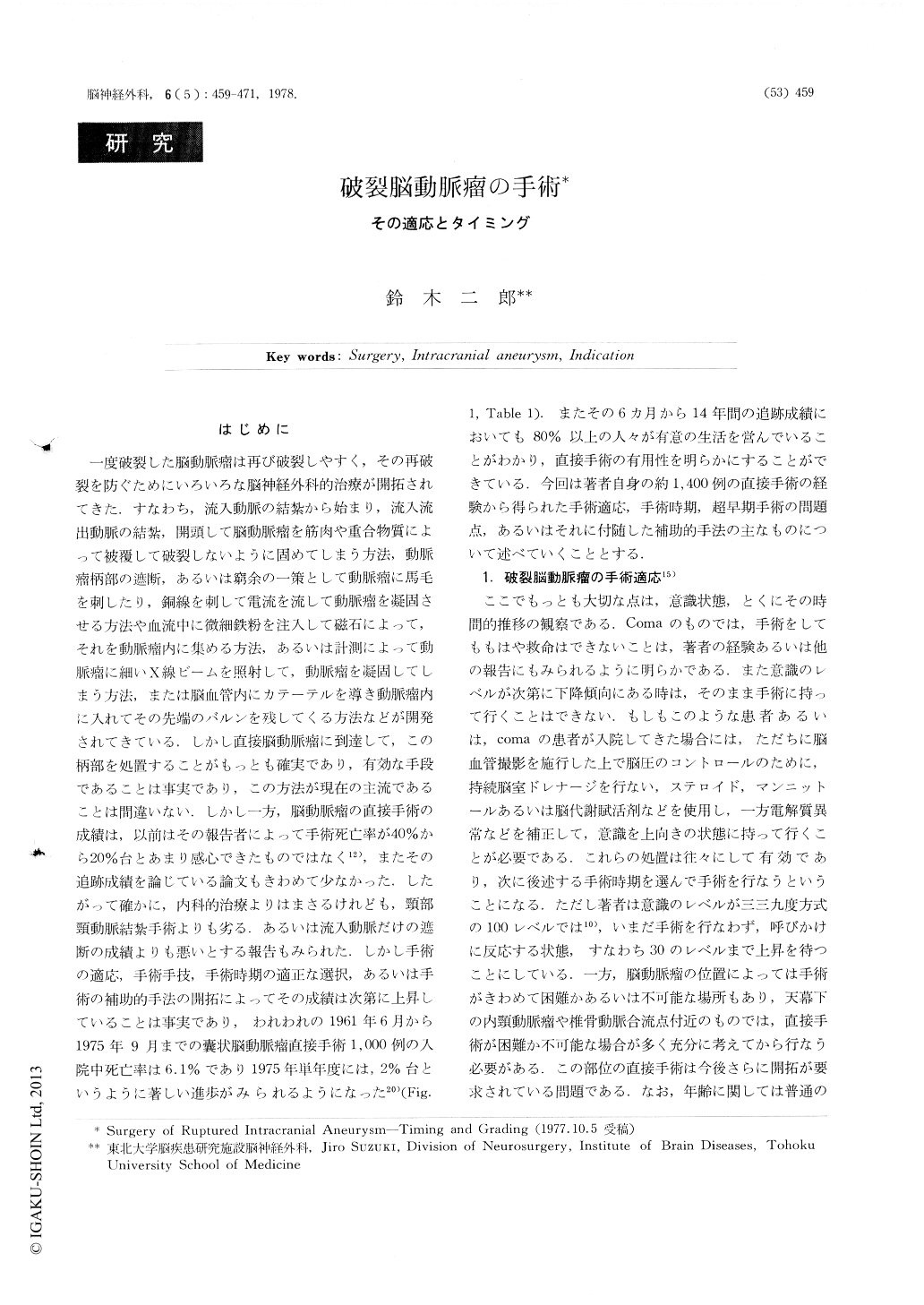Japanese
English
- 有料閲覧
- Abstract 文献概要
- 1ページ目 Look Inside
はじめに
一度破裂した脳動脈瘤は再び破裂しやすく,その再破裂を防ぐためにいろいろな脳神経外科的治療が開拓されてきた.すなわち,流入動脈の結紮から始まり,流入流出動脈の結紮,開頭して脳動脈瘤を筋肉や重合物質によって被覆して破裂しないように固めてしまう方法,動脈瘤柄部の遮断,あるいは窮余の一策として動脈瘤に馬毛を刺したり,銅線を刺して電流を流して動脈瘤を凝固させる方法や血流中に微細鉄粉を注入して磁石によって,それを動脈瘤内に集める方法,あるいは計測によって動脈瘤に細いX線ビームを照射して,動脈瘤を凝固してしまう方法,または脳血管内にカテーテルを導き動脈瘤内に入れてその先端のバルンを残してくる方法などが開発されてきている.しかし直接脳動脈瘤に到達して,この柄部を処置することがもっとも確実であり,有効な手段であることは事実であり,この方法が現在の主流であることは間違いない.しかし一方,脳動脈瘤の直接手術の成績は,以前はその報告者によって手術死亡率が40%から20%台とあまり感心できたものではなく12),またその追跡成績を論じている論文もきわめて少なかった.したがって確かに,内科的治療よりはまさるけれども,頸部頸動脈結紮手術よりも劣る.あるいは流入動脈だけの遮断の成績よりも悪いとする報告もみられた.
In this paper, the correlation of the most favorable optimal timing of surgery with the preoperative condition of patients and severity of initial bleeding of intracranial aneurysm is discussed, basing on the surgical results on each day's groups after initial bleeding of my recent series, a method of prediction of the so-called reattacks which I proposed on the other paper, and my surgical reconsideration of about 1,400cases.
All reports about the results of surgery within one week after the aneurysm rupture were considerably poor, comparing with the results of other periods including my series.

Copyright © 1978, Igaku-Shoin Ltd. All rights reserved.


